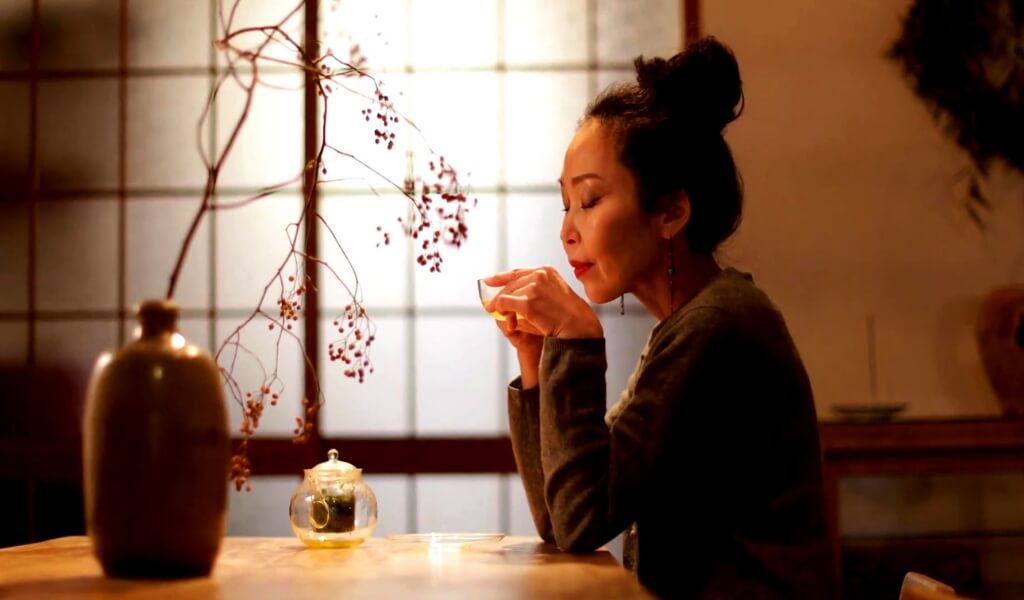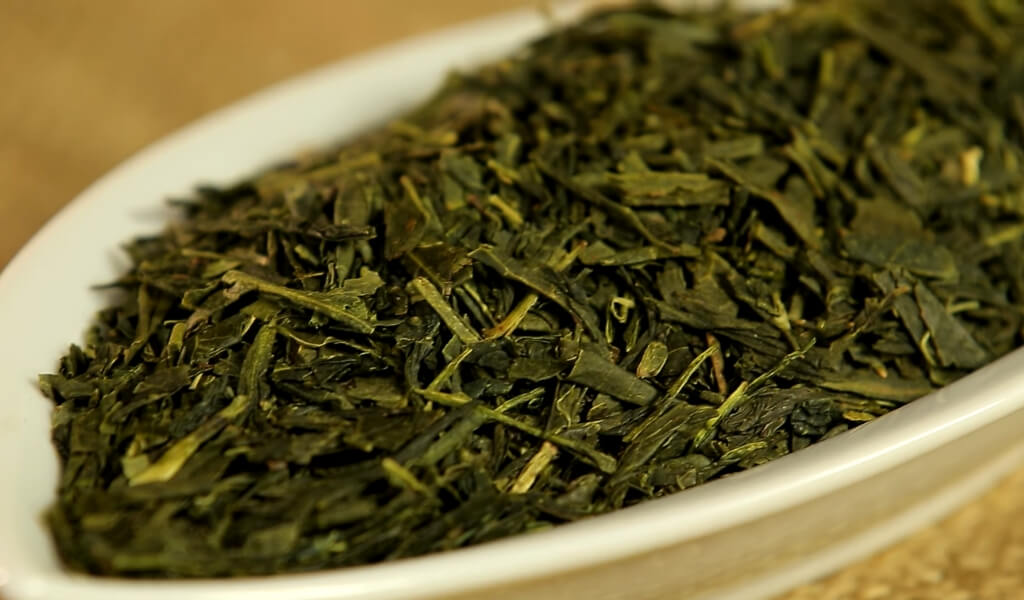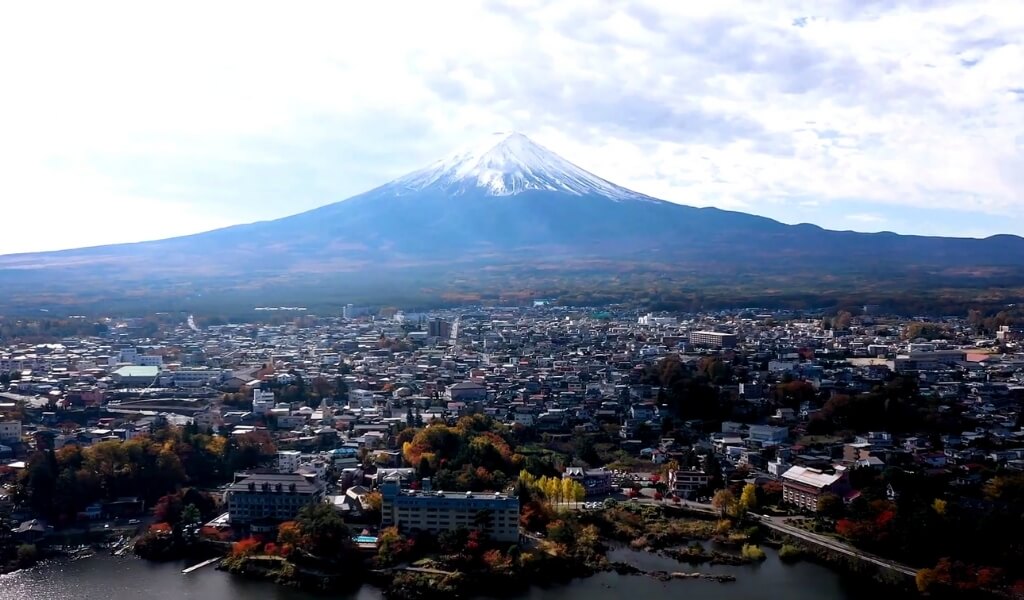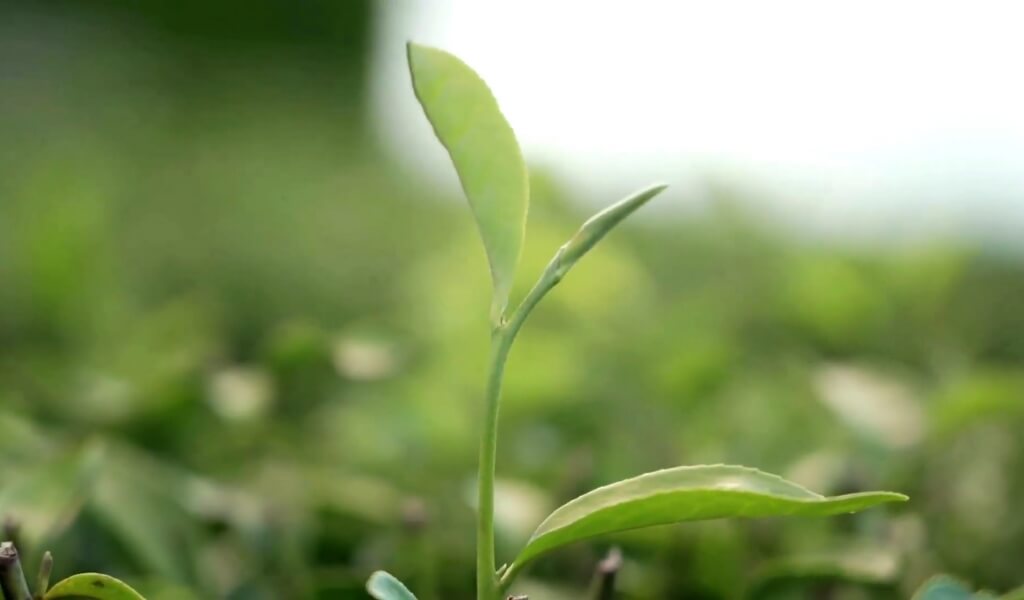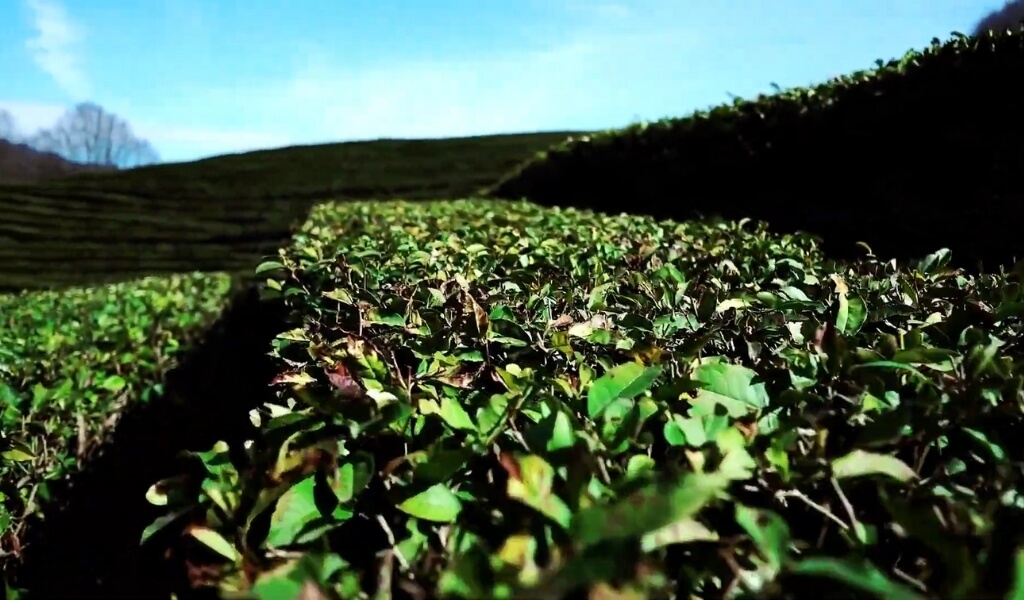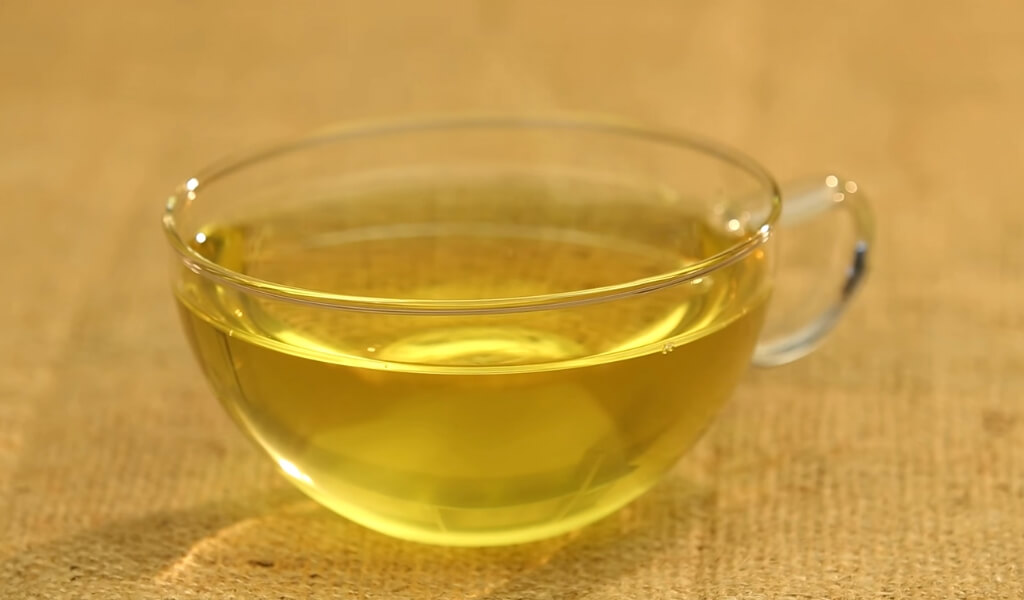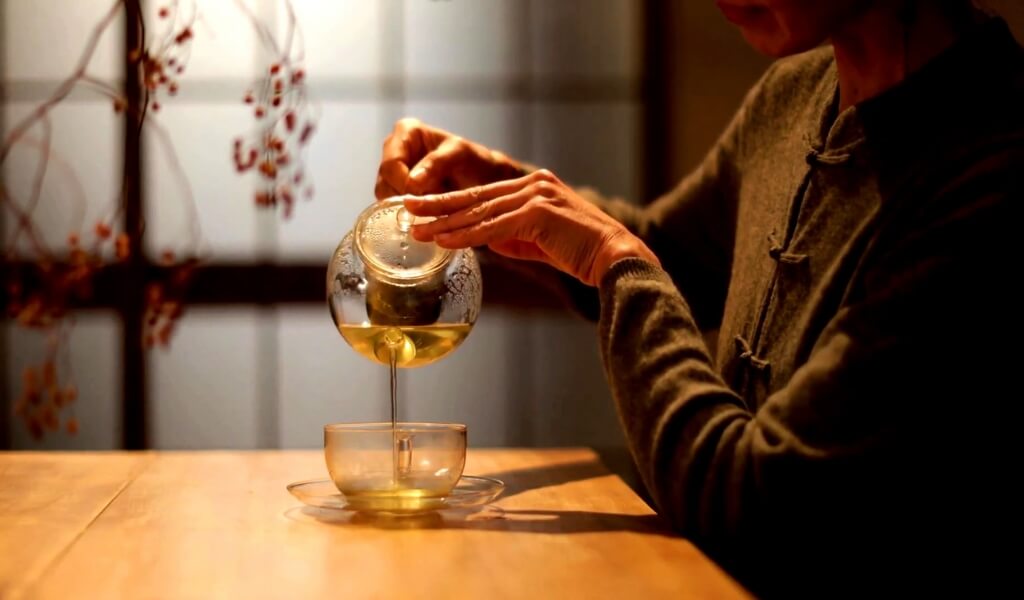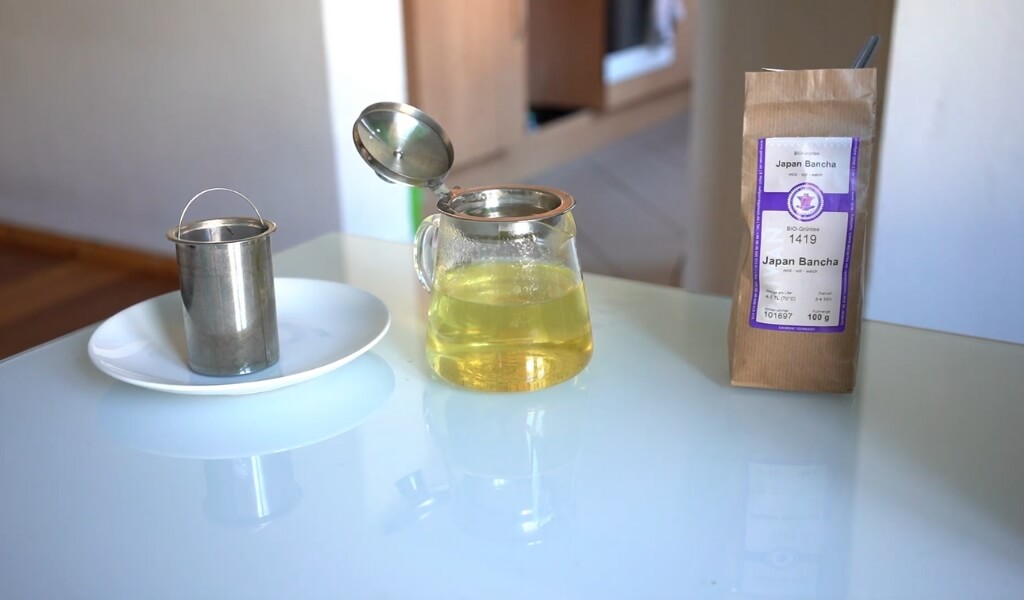Today, we will delve into a unique variety that has a special place in my tea-loving heart – Bancha.
Bancha, a lesser-known yet equally intriguing relative of the famous Japanese Sencha, first captured my senses with its refreshingly grassy notes and vibrant green hues. From my first sip, I knew it was a tea that deserved more recognition and appreciation. This Japanese tea holds a humble place in daily life yet offers a unique experience that leaves a lasting impression.
In the following article, we’ll embark on a journey to learn more about this underrated gem, exploring its origin, how it’s made, the secrets to a perfect brew, and the many health benefits it offers. This is more than just a tea; it’s a testament to Japan’s rich and vibrant culture.
Quotes of tea with You
“The conversation ran as fluidly as the tea out of the samovar’s crooked nose.”
― Ella Leya, The Orphan Sky
What is Bancha Tea?
Bancha is a type of Japanese Green tea, often considered a lower grade than its counterparts like Sencha or Matcha due to the time of leaf harvest and its leaf characteristics. The types of Bancha are primarily defined by the leaves used in their production. Unlike Sencha, which uses young, tender leaves, Bancha is typically made from the larger, coarser leaves and sometimes even the stems and twigs of the Camellia sinensis plant.
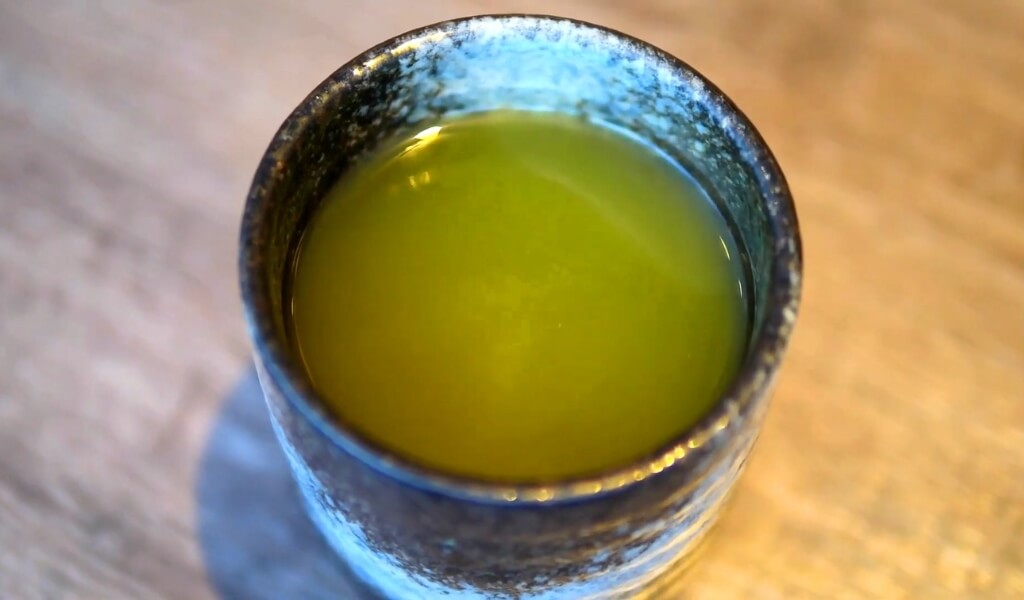
These leaves are harvested later, usually between summer and autumn. This unique choice of leaves contributes to Bancha’s distinct flavor profile, which we’ll dive deeper into later in this article.
Bancha is often described as having a more robust and earthier flavor than other Japanese teas.
Due to the mature leaves used, the Bancha Tea caffeine content also sets it apart, making it a suitable choice for those seeking a milder, less refreshing brew. An eight-ounce cup of Bancha Tea typically contains approximately 10 mg of caffeine.
Furthermore, its high levels of catechins, a type of antioxidant, give Bancha an edge regarding health benefits.
So, while it might not hold the same prestige as some other teas, Bancha’s unique characteristics make it an intriguing addition to any tea lover’s collection. Its nuanced flavor, cultural significance, and health benefits offer a tea-drinking experience that is as enriching as it is enjoyable.
Read More:
- What is Matcha Tea? Origin, Cultivation, Tastes, & Storage
- What is Gyokuro tea? Interesting facts you want to know
- What is Hojicha tea? Health benefits, taste like and Caffeine
- What is Genmaicha Tea? Origins, health benefits and more
- What is Sencha tea? Its Uses, Types Of Use, Buying and Storing
The Origin of Bancha Tea
Bancha, meaning “common tea,” might seem ordinary initially, but its roots run deep into Japanese history and culture. While not as famous as its cousin Sencha, this Japanese tea has an origin story just as steeped in tradition.
The Bancha history can be traced back to the Edo period (1603-1868). During this time, Bancha was a beloved drink among the common people, hence its name. It was often made from the larger, tougher leaves after the first flush of delicate leaves was picked for the higher-grade teas.
But don’t let its humble beginnings fool you. Bancha played a significant role in the day-to-day life of the Japanese, becoming a vital part of their meals and social gatherings.
Its significance is beautifully encapsulated in “The Book Of Tea” by Kakuzo Okakura, who eloquently describes the tea as more than just a beverage but a “religion of the art of life.” Bancha, with its robust flavor and calming properties, contributed to this “art of life,” giving rise to a sense of community and harmony with each shared cup.
Bancha’s roots extend beyond history; it continues to hold a significant spot in numerous Japanese homes even today, serving as a soothing, everyday beverage. When we enjoy Bancha, we indulge in a delightful Japanese tea while also engaging in a centuries-old cultural tradition.
The Process of Making Bancha Green Tea
Let’s explore the journey of Bancha production. It’s a journey that transforms these robust leaves into the delightful tea we savor.
Picking → Steaming → Rolling → Drying.
Once the leaves are picked, they undergo a process of steaming, rolling, and drying. Steaming is essential to stop the oxidation process and maintain a vibrant green color.
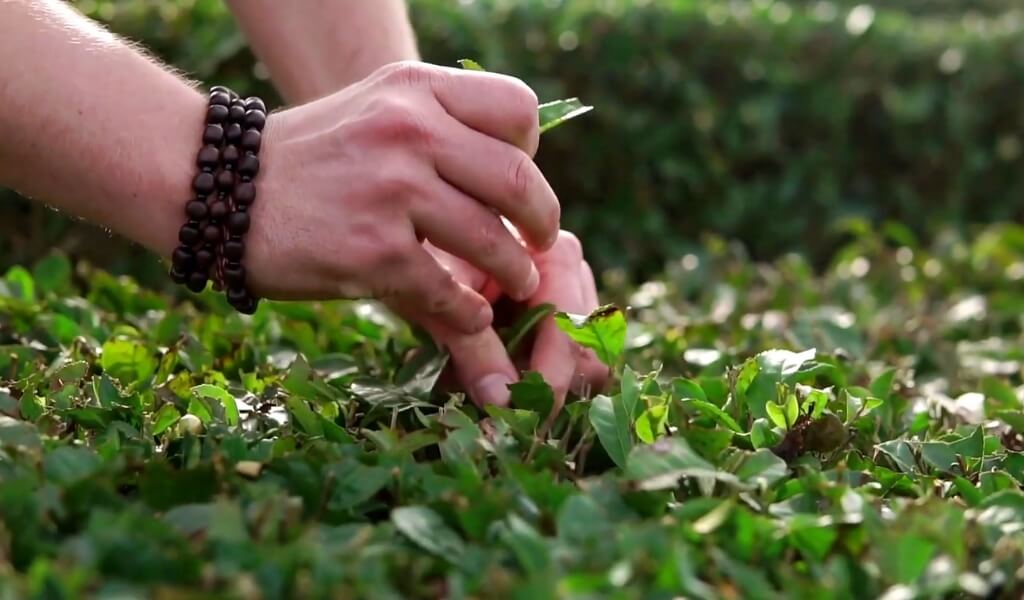
The leaves are then rolled to break down their cell walls, which helps release their flavors during brewing.
The final drying step reduces the moisture content, thus preparing the leaves for storage and shipment.
This traditional process of making Bancha preserves the tea’s nutrients and flavor, offering you a cup of health and wellness.
Types of Bancha Tea
Japanese tea, including Bancha, is teeming with diversity and depth, shaped by factors such as when it’s harvested, its quality, and its place of origin. I’m especially drawn to two primary variations within this captivating world of tea: the unroasted green Bancha and the roasted brown Bancha, widely recognized as Hojicha.
The non-roasted Bancha has a flavor profile resembling Sencha but with softer bitterness. The roasted brown variant, Hojicha or Iribancha, is unique for its captivating aroma. Bancha tea has lower catechin content than Sencha but still boasts a wealth of health benefits.
It’s rich in antioxidants, has antibacterial or antiviral properties, aids in improving cholesterol levels, and helps regulate blood sugar levels.
Now, let’s delve into some specific types of Bancha that I have grown to appreciate over the years:
1. Sannenbancha (Three-year Bancha)
This is a distinctive form of Bancha, harvested and roasted, then aged for three years before it goes through another round of roasting. This aging process results in a tea with very low caffeine content compared to other Bancha variations. Known for its mellow, sweet taste and enticing aroma, Sannenbancha is celebrated as a warming, value-adding beverage in macrobiotic diets.
2. Autumn/Winter Bancha
While Bancha generally comes from tea leaves harvested post-summer, the specific variety made from Sanbancha leaves picked from autumn to winter is termed Shutobancha.
This Autumn/Winter Bancha is unique for its high content of a polysaccharide known to help lower blood sugar levels. For those looking to harness these benefits, I suggest soaking Bancha in water in a container and letting it rest in the refrigerator overnight.
3. Umeboshi Bancha (Plum Bancha)
The versatility of Bancha continues with Umeboshi Bancha, a type that seamlessly combines the world of tea and the distinctive tang of plums.
Bancha tea health benefits and side effects
Health Benefits of Bancha Green Tea
The world of Bancha is as rich in health benefits as it is in flavor. Let’s now explore these Bancha health benefits, which make this Japanese tea an enticing choice for health-conscious individuals.
- Antioxidant properties are one of the hallmark health benefits of Bancha. Bancha is packed with catechins, an antioxidant known for combating harmful free radicals in our body, thus contributing to overall cellular health and disease prevention.
- Cardiovascular health support is another advantage of including Bancha in your diet. According to a study published in the Journal of the American Heart Association, green tea demonstrated a lower risk of heart disease and stroke. The high content of polyphenols in Bancha is credited for this benefit, as they assist in maintaining healthy blood pressure and cholesterol levels.
- Digestive health enhancement can also be expected from Bancha. It is rich in dietary fibers that aid digestion and help prevent constipation. Additionally, the tea’s slight bitterness stimulates the production of gastric juices, facilitating better digestion.
- Bancha tea health benefits weight loss: Rich in antioxidants, specifically catechins, it helps stimulate metabolism and fat oxidation, contributing to weight management. A study published in the American Journal of Clinical Nutrition found that people consuming catechins from green tea (like Bancha) lost an average of 2.9 pounds within 12 weeks without altering their diet.
- Lastly, Bancha’s lower caffeine content, compared to other green teas, allows you to enjoy all these health benefits without the stimulating effects of caffeine.
Bancha tea offers a wide range of advantages, including its well-known ability to combat cancer and prevent oral infections. It also promotes mental clarity and concentration. Additionally, it provides various benefits such as enhancing skin health, aiding in weight loss, bolstering the immune system against the flu and colds, reducing the risk of heart disease, and preventing and relieving HPV infections.
Side Effects of Bancha Green Tea
While Bancha tea is lauded for its health benefits, it’s also essential to be aware of a few potential side effects.
Caffeine sensitivity: Although caffeine is lower than other teas, Bancha still contains this stimulant. This may lead to restlessness, insomnia, or stomach issues in caffeine-sensitive individuals.
Iron absorption: Bancha tea contains tannins, which can interfere with iron absorption. The American Journal of Clinical Nutrition reports that tea can reduce iron absorption by 50% when consumed with meals. It may pose a concern for those with iron deficiencies or anemia.
Allergic reactions: Though rare, some may be allergic to green teas like Bancha, including skin rashes, hives, or swelling. If you experience these symptoms, it’s advisable to seek medical attention.
Remember, moderation is key when enjoying Bancha tea, and always consult a healthcare professional if you have specific health concerns.
How to Brew the Perfect Cup of Bancha Green Tea
Brewing a perfect cup of Bancha is not just about making a beverage, and it’s about creating an experience.
Last Friday afternoon, with my cousin coming over, I created such an experience with Bancha. The process is simple yet mindful, and here, I share the steps with you:
- Heat Your Water: Start by heating your water to the right temperature. For Bancha, this is around 80-85 degrees Celsius. Any hotter, and you risk burning the leaves, leading to a bitter taste.
- Measure Your Tea Leaves: Once your water is ready, measure out your Bancha leaves. About a tablespoon per cup is a good starting point. Bancha leaves are larger and require more volume to extract the right flavors.
- Steep Your Tea: Pour hot water over the tea leaves and steep them for 2-3 minutes. This time allows the leaves to unfurl and release their flavors fully. Over-steeping can lead to an overly strong or bitter taste, so watch the clock!
- Strain and Serve: Strain your tea into a cup after the steeping time. Your Bancha is now ready to enjoy!
There are, however, some common Bancha brewing mistakes to avoid:
- Not Using Enough Tea Leaves: Bancha leaves are larger and thus require a bit more volume. Don’t skimp on them!
- Over-Steeping: As tempting as it might be to let your tea steep a little longer for a stronger flavor, avoid overstepping. This can lead to a bitter brew that overshadows Bancha’s unique characteristics.
Bancha tea where to buy
Finding Bancha tea can be an enjoyable part of your tea journey. Here are some of my favorite places to source this unique tea.
Local Asian Markets: In my experience, local Asian grocery stores often have many teas, including Bancha.
Tea Shops: I HEAD TO A LOCAL TEA SHOP when looking for a special treat. You may pay more at these shops, but the quality and expertise of the staff are worth it.
Online Retailers: Websites like Amazon, eBay, or specialty online tea stores often have Bancha tea. Be mindful of customer reviews and seller ratings to ensure a good buying experience.
Direct from Tea Producers: If you’re passionate about tea like I am, buying directly from Japanese tea producers can be an enriching experience. However, remember to factor in potential shipping costs and import taxes.
Wherever you buy your Bancha tea, remember to enjoy the process, and happy brewing! From spiriteadrinks.com
Conclusion
We’ve taken quite a journey today, haven’t we? From tracing the origins of Bancha to brewing our cup at home, we’ve immersed ourselves in the aromatic world of this distinct Japanese tea.
I hope you’ve found inspiration in these lines to explore and experience Bancha in your kitchen.
I’m eager to hear your thoughts and experiences! Have you tried brewing Bancha? How did it turn out? Do you have a unique tip to share? I’d love to see your comments below. And if this article sparked joy in your tea-loving heart, please share it with your friends on social media.
But the adventure continues. I’m always steeping new ideas and would love to know what interests you. Want to explore another type of tea? Or curious about different brewing methods? Let me know in the comments. Remember, every cup of tea is a new journey, and I’m here to help you savor every sip.
Until next time, happy brewing, and remember to savor the joy of tea! Thanks for spiriteadrinks.com
FAQs
What is bancha tea good for?
Bancha tea is good for a host of health benefits. It’s rich in antioxidants, known to aid digestion, and can be a calming beverage due to its lower caffeine content than other teas.
What is the difference between matcha and banchan?
The primary difference between Matcha and Bancha lies in the preparation and processing. Matcha is a powdered green tea made from leaves grown in the shade, while Bancha is typically made from larger, coarser leaves grown in full sunlight.
Is bancha the same as hojicha?
No, Bancha and Hojicha are not the same, although both are Japanese teas. Bancha is a type of green tea, while Hojicha is a roasted green tea with a distinct reddish-brown color and a toasted flavor.
What is Japanese bancha tea?
Japanese Bancha tea is a green tea, known for its mild flavor and low caffeine content. It’s often harvested from the second flush of tea leaves in the late summer or autumn.
Is bancha tea alkaline?
Bancha tea is mildly alkaline due to its mineral content. This property contributes to its soothing effect on the stomach and its overall health benefits.
Does bancha have l theanine?
Like most green teas, Bancha contains L-Theanine, an amino acid that promotes relaxation and reduces stress without causing drowsiness.
Is bancha the same as kukicha?
No, Bancha and Kukicha are different types of Japanese teas. While Bancha is made from mature tea leaves and stems, Kukicha, also known as twig tea, is primarily made from the stems and twigs of the tea plant.
Does bancha twig tea have caffeine?
Yes, Bancha twig tea, also known as Kukicha, does contain caffeine, but it’s significantly less than other green teas due to the high proportion of stems and twigs used in its production.
What is Bancha Green Tea in Chinese?
“Bancha” is a term specific to Japanese tea culture. In Chinese, it could be translated as “普通茶”, which also means “common tea”.
What is the meaning of bancha?
“Bancha” translates to “common tea” in English. It refers to Japanese green tea commonly enjoyed due to its mild flavor and lower caffeine content.
I’m Shanna, creator of Spiritea Drinks. I’m all about teaching people to grow their own food, tea, cook what they harvest, and eat with the seasons.

